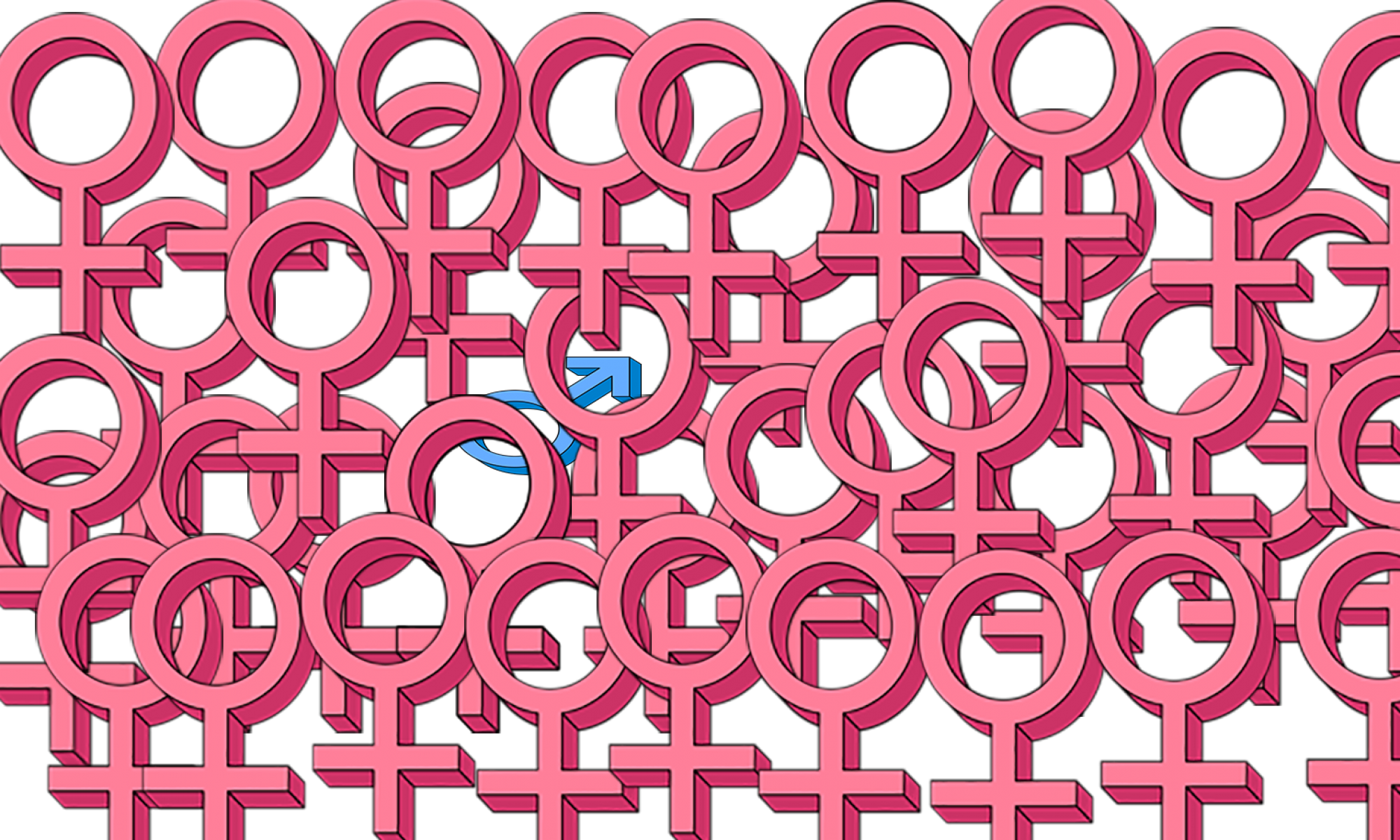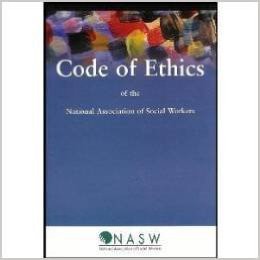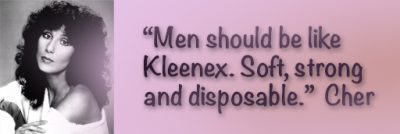Psychologists have studied and argued about male sex roles for many years. They have done a decent job, with a few exceptions, of describing these roles. These include the independent, tough, competitive and unemotional types and many others. But they have missed possibly the most important aspect of these roles completely, and that is the connection of the male sex role with gynocentrism. Without gynocentrism the male role would simply not exist. It is an essential element in the male sex role and describing the traits that might make up such a role is very short sighted. They have failed miserably at identifying the underlying reason for the roles. On that point there is mostly silence. Take the example of the recent movie titled “The Mask.” In this film male roles are villainized and seen as a problem that boys need to remove as if they can take off these roles like they might take off a mask. There is zero mention of why those roles have evolved as they have.
This article will start a discussion about the connection of male sex roles with gynocentrism and how our zest to push boys into male sex roles is actually a push to train them to be gynocentric foot soldiers.
__________________________
I can remember in the 1950’s when I was a little guy the common phrase used in my elementary school was “girls first.” Whether it was a line to get ice cream, leaving a large school assembly, or just getting a drink from a water fountain. The standard chant was girls first. The girls got to go before us boys simply because they were girls. I can remember asking when the boys would get to go first and was rebuked and told to just wait my turn. What is the message to boys? Your needs are secondary. Your job is to sacrifice and let the girls go first, get used to it. Of course there was never a time when any teacher said “boys first.” Boys first has a strange ring to it, doesn’t it? The message was clear. As boys we needed to put our needs second and allow the girls to go first, simply because of their biological difference, they were girls. And if you complain about this unfair advantage you will be shamed and labelled as a troublemaker.
If you are going to be a gynocentric foot soldier you had better learn that your needs are never first. You will be facing many situations in the future where you will need to put women’s needs ahead of your own. Get used to it. This is the beginning of basic training.
While the overt usage of the “girls first” or “ladies first” adage may be diminished I think that the idea is still prevalent. All one has to do is search google and see how many images sport the “ladies first” meme. This gives us the odd mix of “ladies first” alongside “we are all equal.” Yet another bizarre twist in our misandrist culture.
Added into this crazy mix is the big boys don’t cry message. Nearly every male in the US has heard this repeatedly. Much has been made about how this stops men from emoting in public and encourages them to avoid their tears. Men have been shamed for eons for not “dealing with their feelings.” I think this obvious blue pill assessment is limited and misses the mark. If one ignores the gynocentric connection then one sees only a man avoiding emotions. But why? Why would a man want to avoid emotions? The first reason is that in a gynocentric world women’s needs and feelings are important and men’s are not. Think back to a little boy being told that big boys don’t cry. What are they saying to him? They are saying that his needs and hurts are not as important as his sister’s. When do young boys cry? They cry when they have needs that are not being met, or when they need attention to a hurt. The message is clear. When you are a boy and you are hurt or have needs, they are less important than your sister’s. And if you dare complain about it you will just hear the same message once again, “big boys don’t cry.” Voicing your needs is seen as whining. If you are going to be a good gynocentric foot soldier, that is, be a good provider and protector of women you can’t whine or cry.
But there is another piece of this mess that is rarely mentioned. By saying to a young boy that big boys don’t cry you are not only telling him to STFU you are also alleviating yourself from any responsibility to tend to a boy’s pain or to muster even a rudimentary degree of compassion. So the message to the boys is clear, your pain does not matter as much as our sister’s and it matters so little that those who love you don’t feel the need to offer you support or compassion. Deal with it. Be a man. Boys learn to handle it themselves because very few others will step forward and offer them a hand. But they also learn that others simply don’t care about their pain. This is the basic training of a gynocentric foot soldier.
And then there is the mess that starts for boys in early childhood where they are told to never hit a girl and if they do they will face severe punishment. This rule is enforced, not only by the parents or authorities but also by the toughest boys. The girls catch wind of this and take advantage. Some start hitting the boys knowing the boys cannot hit back. But wait, the girls violence is ignored. No one lifts a finger. The boys already know that no one will likely listen and will turn away and shame them for complaining. Now they find out that violence is just one more area where their needs don’t count. They also know that if they report a girl who hits them they will face a gauntlet that labels them a pussy. Boys learn to stay quiet about their needs, even safety needs. This is what a foot soldier is supposed to do. The girls learn that they can be damsels in distress and turn on the waterworks to get what they want. They also learn they can get away with violence against boys. The boys learn they face a very unfair system and they better stay quiet about it. If any of the boys speaks up and complains they regret it. They get punished for speaking up. Quiet, you just take care of yourself and take it like a man. Reminds me of our present day domestic violence system.
These three, girls first, never hit a girl, and big boys don’t cry are the marching orders of the gynocentric foot soldiers. Each one informs the boy of his role. The gynocentric army is all about the safety and satisfaction of women through the sacrifice of men. It’s pretty simple and has been functioning effectively for centuries. “Big boys don’t cry” tells boys that their needs are simply not as important as the tears of women and girls they are destined to sacrifice for. “Girls first” tells the boys to get used to the idea of sacrificing their own wants and desires in order to help women and girls. “Never hit a girl” marks out who is the enemy (other men) and who is to be protected (women and girls). All of this goes on under the radar with most people simply being ignorant of what underlies these messages.
We can’t blame the culture totally for this. I think there is compelling evidence that there are biological factors that are driving gynocentrism. If there were no biology involved do you think for a second that boys would do exactly what they are told? Hell no. Do boys follow just about any other dictum offered by parents or the culture at large? No. Do boys unquestioningly follow? Of course not, boys by nature are rebellious and very slow to do what is demanded of them. But do they follow through on these three things? Pretty much. Not only do they follow through they also patrol the males around them to be sure that they are also following through. This is more than just culture.
Boys are surrounded by these gynocentric messages. At home they will likely see their dads put his needs last and focus on what mom wants and rarely saying “no” to her. In the media they get more gynocentrism. Men saving women from harm and sacrificing their own safety, needs, their desires or even their lives in order to do so. Worse yet, if they are not saving women they are portrayed as stupid and incompetent which seems to be a gynocentric man’s way of trying to make women feel better in comparison. Men are shown to be unable to make a simple decision without the help of a smart woman who can show him the way. Most men don’t complain.
Our college campuses are overrun with gynocentrism. No one dares to cross the gynocentric party line of the women studies departments for fear of their job. Women first? Yes, maam.
In our legislators the boys see the same. Like automatons, our gynocentric male legislators do exactly the same thing. We have seen them focus on women’s and girls needs, especially for the last 50 years and ignore the needs of men. Just like the boys were taught, just like the boys saw from their father, just like we see in the media. Now our legislators are acting out this same foot soldier pattern by enacting laws to help women and girls and completely ignore the needs of boys and men. Domestic violence laws like the Violence Against WOMEN Act, the rape shield laws, sexual harassment laws, workplace harassment, affirmative action for women and girls, title IX and on and on. Boys and men are an afterthought.
Gynocentrism is bad enough but what happened In the past 50 years put a new sinister spin on the gynocentric foot soldiers Now it wasn’t just girls first and big boys don’t cry, now the new fabricated twist was that women and girls were oppressed, by men. Our young men make it to middle or high school after years of gynocentric training and now they must deal with a new monster, the lethal and incorrect mantra: Men oppressed women and women are victims. If they contradicted or questioned a party line about women and girls being victims or having special needs they would face overwhelming opposition. Much of that opposition would be from gynocentric soldiers protecting women.
So on top of the ideas that boys are here to protect, care for, and provide for women is the bizarre notion that the very people who had been providing and protecting them were now guilty somehow of being perennial abusers of women and girls. So now men and boys need to provide and protect women and also atone for some mythical oppression of those they have sacrificed for years. Really? Maybe put even more simply, it’s like having a slave owner tell his slaves that they had oppressed him in the past and that their ancestors had oppressed him as well and they now need to make up for that with special treatment for him. Enough said.
Our boys face a routine and unacknowledged training to be gynocentric foot soldiers. The male sex role is based on placing the needs , safety, and desires of women and girls on a higher level than those of men. If we ignore this foundation we are sure to fail in serving men. From the childhood messages like big boys don’t cry to viewing the vast majority of male role models who are serving the needs of women and neglecting their own wants and needs our boys rarely see a man choosing consciously and going his own way. This needs to change.
If we are really going to free men from their roles we will need to help them first with what has been drilled into them and is facilitated by their biology: putting women first. Instead of trying to teach boys to cry we need to teach boys that their needs are of importance. We will need to teach boys that it is not mandatory for them to provide and protect for others, that it is also okay for them to simply care for themselves. We need to help them see the value in their being, not just in their doing and we need to help them see that, in spite of what the culture and feminists might say, men are good. Then once they have the data, once they get the information and understand the gynocentric yoke, then and only then should we let them go whatever way they want. If they want to get married then so be it. If they want to move to the desert and be a hermit then so be it. Unlike the feminists who push women into certain roles and shame them for others, we need to bless the boys in their own choices whatever they might be.
Men are indeed good.

 The NASW Social Work Code of Ethics is a very helpful but demanding document. It asks us to live a cognizant life both at work and at home. If we take this document seriously, and we certainly must, it demands that we are prepared to confront things not in concert with the Code.
The NASW Social Work Code of Ethics is a very helpful but demanding document. It asks us to live a cognizant life both at work and at home. If we take this document seriously, and we certainly must, it demands that we are prepared to confront things not in concert with the Code.




